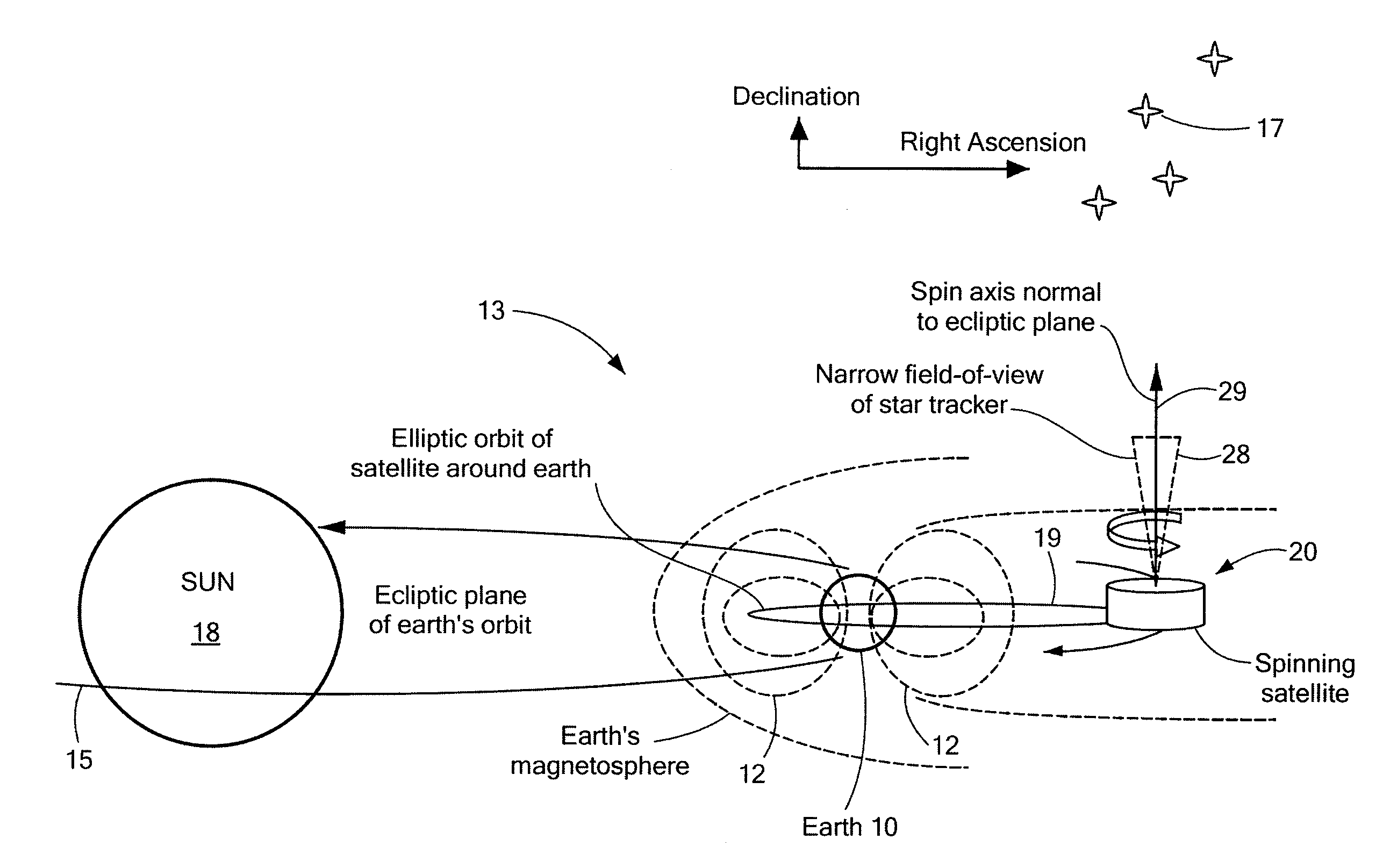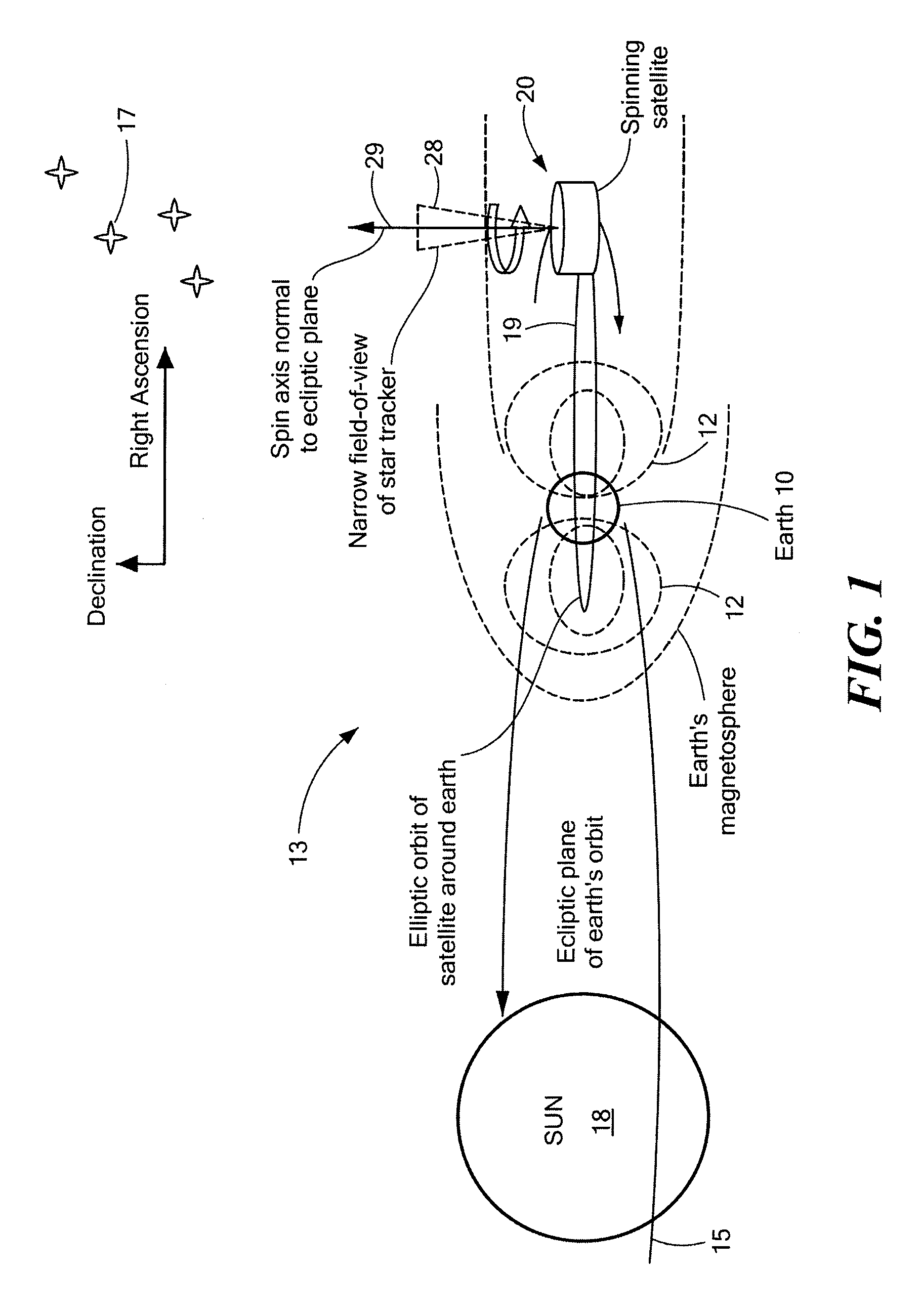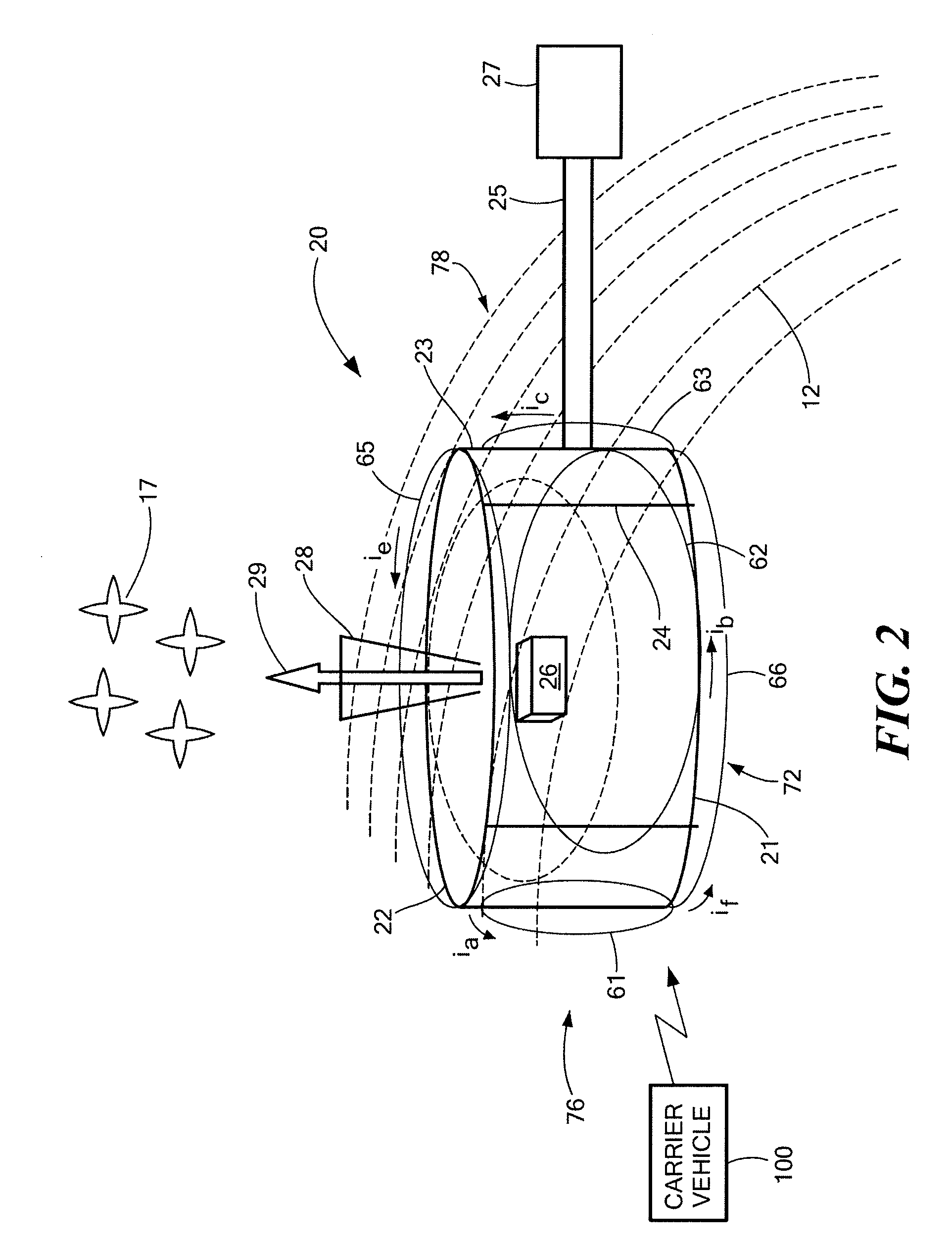Method of determining and controlling the inertial attitude of a spinning, artificial satellite and systems therefor
a technology of inertial attitude and artificial satellite, applied in the direction of navigation instruments, instruments for comonautical navigation, instruments, etc., can solve the problems of radiation susceptibility and temperature susceptibility, and achieve the effects of reducing material bulk, high gain, and high bandwidth capacity
- Summary
- Abstract
- Description
- Claims
- Application Information
AI Technical Summary
Benefits of technology
Problems solved by technology
Method used
Image
Examples
Embodiment Construction
[0039]Methods and systems for accurately determining and controlling the inertial attitude of an artificial satellite, a spinning satellite, a spinning strategic missile, a spinning communication antenna system, a spinning surveillance satellite system, a spinning station-keeping formation system, a spinning scientific measurement satellite system, a spinning astronomical measurement satellite system, and the like (hereinafter, collectively referred to as “an artificial satellite” for brevity) are disclosed. The disclosed methods constitute an improvement to the methods discussed in U.S. Pat. No. 6,577,929 to Johnson, et al., which is incorporated in its entirety herein by reference.
[0040]Briefly, U.S. Pat. No. 6,577,929 discloses methods for measuring the inertial attitude of artificial satellites and, more particularly, for measuring the inertial attitude of spinning, artificial satellites or non-spinning, three-axis stabilized artificial satellites. According to U.S. Pat. No. 6,5...
PUM
 Login to View More
Login to View More Abstract
Description
Claims
Application Information
 Login to View More
Login to View More - R&D
- Intellectual Property
- Life Sciences
- Materials
- Tech Scout
- Unparalleled Data Quality
- Higher Quality Content
- 60% Fewer Hallucinations
Browse by: Latest US Patents, China's latest patents, Technical Efficacy Thesaurus, Application Domain, Technology Topic, Popular Technical Reports.
© 2025 PatSnap. All rights reserved.Legal|Privacy policy|Modern Slavery Act Transparency Statement|Sitemap|About US| Contact US: help@patsnap.com



